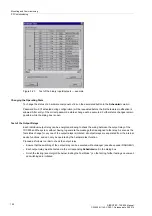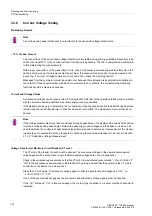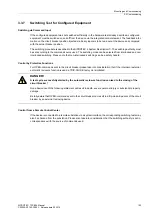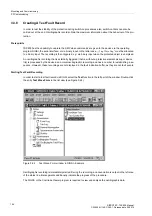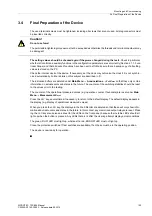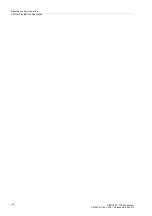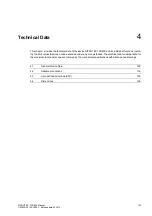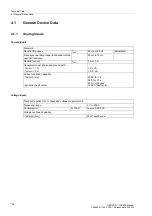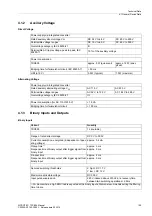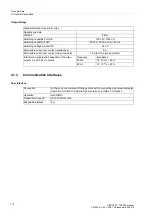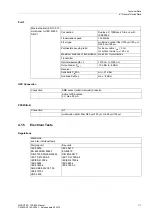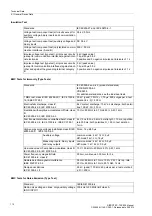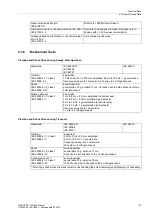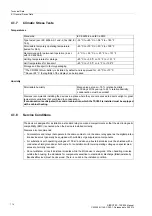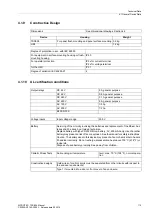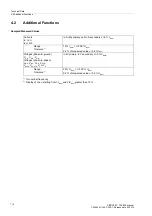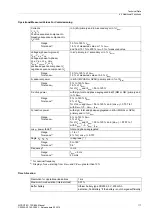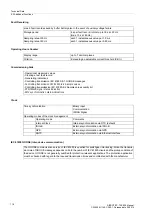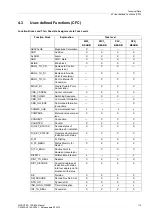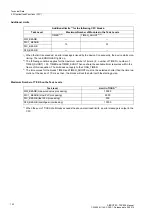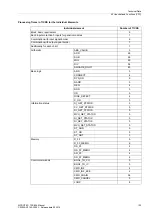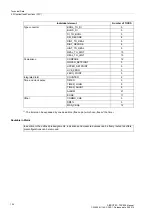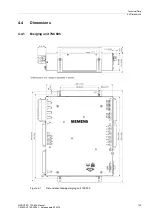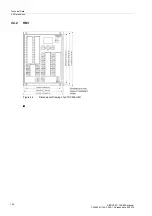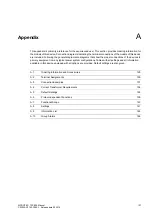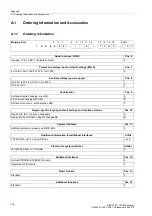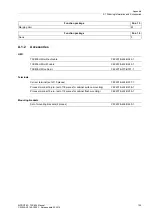
Technical Data
4.1 General Device Data
SIPROTEC, 7SC805, Manual
C53000-G1140-C380-1, Release date 05.2014
114
4.1.7
Climatic Stress Tests
Temperatures
Humidity
4.1.8
Service Conditions
Standards:
IEC 60255-6 and IEC 60870
Type tested (acc. IEC 60086-2-1 and -2, Test Bd, for
16 h)
-50 °C to +85 °C or -58 °F to +185 °F
Permissible temporary operating temperature
(tested for 96 h)
-40 °C to +70 °C or -40 °F to +158 °F
Recommended for permanent operation (in acc.
with IEC 60255-6)
- 5 °C to + 55 °C or + 23 °F to + 131 °F
Limiting temperatures for storage
–25 °C to +55 °C or -13 °F to +131 °F
Limit temperatures for transport
–20 °C to +70 °C or -4 °F to +158 °F
Storage and transport in factory packaging
1)
The CR2032 lithium battery is installed by default and is approved for –30 °C to +70 °C.
2)
Above +55 °C the legibility of the display can be impaired.
Permissible humidity
Mean value per year
75 % relative humidity;
on 30 days of the year up to 95 % relative humidity;
condensation must be avoided!
Siemens recommends installing the devices in a place where they are not exposed to direct sunlight or great
temperature variations that could lead to condensation.
If condensation is anticipated, the control cabinet into which the 7SC805 is installed must be equipped
with a cabinet heating.
The device is designed for installation in standard relay rooms and compartments so that the electromagnetic
compatibility (EMC) is ensured when the device is installed correctly.
Siemens also recommends:
• All contactors and relays that operate in the same cabinet or on the same relay panel as the digital protec-
tion devices must generally be equipped with suitable surge suppression components.
• For substations with operating voltages of 100 kV and above, all external cables must be shielded with a
conductive shield grounded at both ends. For substations with lower operating voltages no special mea-
sures are normally required.
• Do not withdraw or insert individual modules while the MU device is energized. When handling modules
outside the housing, the standards for components sensitive to electrostatic discharge (
E
lectrostatically
S
ensitive
D
evices) must be observed. There is no risk in the installed condition.

